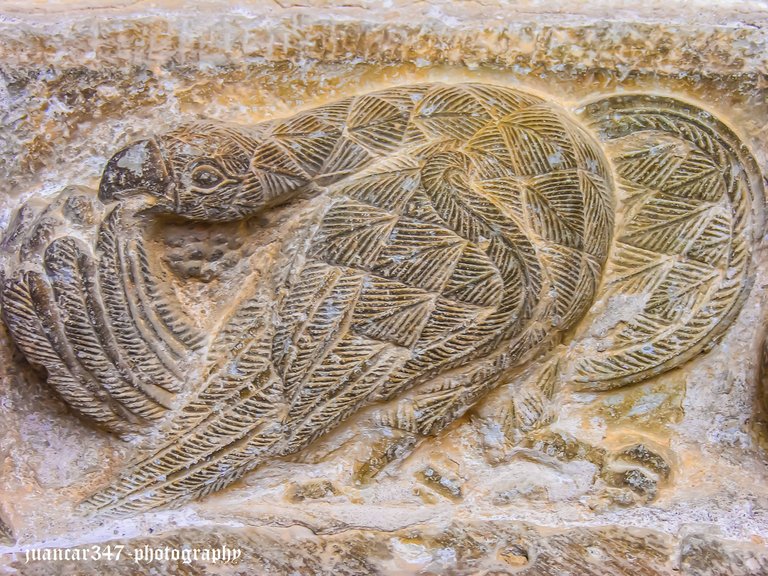[ENG-SPN] The Celtic Sculpture That Crossed the Sea: Ireland in Soria Stone / La escultura celta que cruzó el mar: Irlanda en la piedra soriana
Of those close connections that existed since ancient times between Spain and Ireland, some evidence still remains in our most arcane architecture. These, in addition to raising fabulous hypotheses among historians and private researchers, pay tribute to those Irish stonemasons who one day reached our shores and also ventured inland, leaving evidence of their passage with what they knew best, apart from preaching, in many cases: sculpting stone and building.
In this sense, it's worth taking a stroll through a picturesque Numantian village named Villasayas and admiring the doorway of its parish church, Romanesque in its early days but much modified over time and with the acceptance of other trends, which, after all, we can consider to be styles. In many cases, the grid-like sacred geometry, where nothing was left to chance, that characterized the styles that dominated Spain for centuries: Romanesque and Gothic, was lost.
Perhaps here, in this peaceful Soria plot, as the friends of Salud y Románico (Health and Romanesque) thought years ago, stonemasons and, at the same time, perhaps also monks of the Green Erin, emulated the mythical Saint Brendan—the Irish Marco Polo—leaving their peculiar sculptural model at the center of that vast universe where legends sprout like stars, within that metaphorical galaxy, which, after all, continues to be Old Castile.
De aquellas estrechas conexiones que existieron desde tiempos remotos entre España e Irlanda, quedan todavía algunos testimonios en nuestra arquitectura más arcana, que, además de levantar fabulosas hipótesis entre los historiadores e investigadores particulares, guardan un cumplido homenaje a aquellos canteros irlandeses, que un día llegaron a nuestras costas y se adentraron también en el interior, dejando constancia de su paso con lo que mejor sabían hacer, aparte de predicar, en muchos casos: esculpir la piedra y construir.
En este sentido, merece la pena darse un paseo por un pintoresco pueblo numantino, de nombre Villasayas y admirar la portada de su iglesia parroquial, románica en sus inicios, pero muy modificada con el paso de los tiempos y la aceptación de otras modas, que, después de todo, podemos pensar que son los estilos, donde en muchos casos se perdió esa cuadriculada geometría sagrada, donde no se dejaba nada al azar, que caracterizó a los estilos que imperaron durante siglos en España: el Románico y el Gótico.
Puede que aquí, en este tranquilo solar soriano, como pensaban hace años los amigos de Salud y Románico, canteros y a la vez, es posible que también monjes de la Verde Erín, emularan al mítico San Brandán -el Marco Polo irlandés- dejando su peculiar modelo de escultura, en el centro de ese basto universo donde las leyendas brotan como las estrellas, dentro de esa metafórica galaxia, que, después de todo, continúa siendo la Vieja Castilla.
NOTICE: Both the text and the accompanying photographs are my exclusive intellectual property and are therefore subject to my Copyright.
AVISO: Tanto el texto, como las fotografías que lo acompañan, son de mi exclusiva propiedad intelectual y por lo tanto, están sujetos a mis Derechos de Autor.








(Villasayas and admire the façade of its parish church, Romanesque in its beginnings) When I read this phrase I think of today's churches, I mean that they have that detail that differentiates them from the others, let me explain: When we travel to different places, countries, towns, etc., the churches have one or more characteristics that make us know where they are located when we see them. This one you're talking about has had some modern influences, but it has that detail that makes it different from the others and obviously from more remote times.
https://x.com/lee19389/status/1978402949496725773
#hive #posh